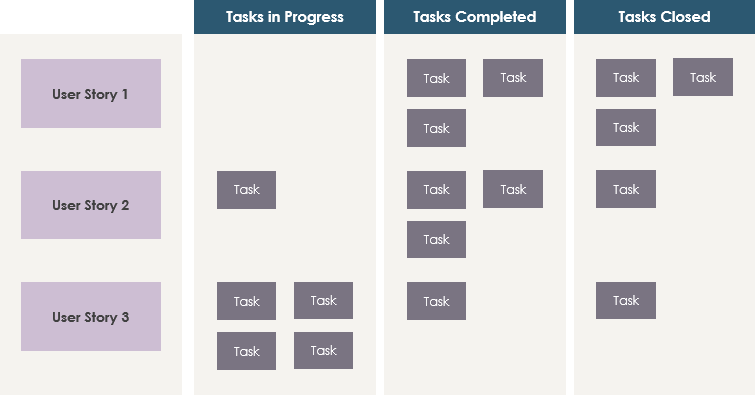Home » Archives for September 2023 » Page 5
Introduction In the dynamic realm of Agile software development, a web of interconnected concepts ensures the seamless flow of work, the attainment of high-quality outcomes, and the meeting of project objectives. At the heart of this ecosystem are the Product Backlog, Sprint Planning, Definition of Ready, Sprint, Definition of Done, and Deliverables. Understanding how these elements relate to each other is essential for Agile teams striving to deliver value with precision and efficiency. This article explores these fundamental Agile concepts and their intricate connections, shedding light on how they collectively shape the Agile…
continue reading →
Introduction In the world of Agile software development, the sprint backlog plays a pivotal role in ensuring that projects are delivered on time, with the right features, and at the highest quality possible. It's an essential tool that helps Agile teams plan, organize, and execute their work efficiently. In this article, we'll delve into the purpose of the sprint backlog and provide practical examples of how it functions within Agile development. What is a Sprint Backlog? A sprint backlog is a subset of the product backlog, which is a prioritized list of features,…
continue reading →
Introduction In the realm of Agile development, Product Backlog and Sprint Backlog are two essential concepts that play a pivotal role in managing and delivering successful software projects. They are both crucial components of the Scrum framework, a popular Agile methodology. To effectively navigate the world of Scrum and Agile development, it's essential to understand the differences between these two backlogs and how they work in tandem. In this article, we will explore Product Backlog and Sprint Backlog, providing examples to illustrate their distinctions and functions. Product Backlog The Product Backlog is the…
continue reading →
In the world of Agile software development, the Sprint Planning Meeting stands as a crucial event that sets the tone and direction for the upcoming sprint. This collaborative gathering is where teams come together to define their goals, allocate tasks, and ensure everyone is on the same page. In this article, we will explore the importance of Sprint Planning Meetings, provide a meeting template, and offer an example to illustrate the process. The Significance of Sprint Planning Meetings Sprint Planning Meetings are a cornerstone of the Scrum framework, one of the most widely…
continue reading →
Case Study: Mobile Expense Tracker App As a software development team, you have been tasked with creating a mobile expense tracker app. The app should help users track their daily expenses, categorize spending, and set budget goals. The goal is to provide users with a user-friendly, efficient, and feature-rich application that can be used on both Android and iOS platforms. To simulate a product backlog for this project, let’s create a table with several user stories, their priorities, estimations (in story points), and acceptance criteria. User Story Priority Estimation Acceptance Criteria User Authentication…
continue reading →
Introduction In the world of Agile development, the product backlog stands as a cornerstone of efficient project management. It's a dynamic and living document that outlines the features, enhancements, and bug fixes that need to be developed in a software project. The product backlog is essential for prioritizing work, aligning the team's efforts with customer needs, and ensuring that the project stays on track. In this article, we'll explore what a product backlog is, its importance in Agile methodology, and how to effectively manage it. What Is a Product Backlog? A product backlog…
continue reading →
Introduction In the realm of Agile development, user stories serve as essential building blocks for communication between development teams and stakeholders. However, to ensure these stories are implemented correctly and meet the desired objectives, acceptance criteria are indispensable. Acceptance criteria provide the specific conditions and expectations that a user story must fulfill to be considered complete. But what's the best way to structure these criteria? In this article, we delve into three popular acceptance criteria templates: Given-When-Then, Behavior-Outcome-Expectation, and Role-Feature-Reason. We will explore the pros and cons of each template and discuss when…
continue reading →
In Agile development, the user story is a fundamental building block for delivering value to the customer. These concise descriptions of desired functionality capture the 'who,' 'what,' and 'why' of a feature or requirement. However, to ensure that user stories are both actionable and testable, Agile teams often employ a technique called "Give / When / Then" (GWT) acceptance criteria. This method helps to define the expected behavior of a user story in a clear and unambiguous manner. What Are Acceptance Criteria? Acceptance criteria are conditions or rules that a user story must…
continue reading →
User stories are a fundamental component of Agile development, serving as concise descriptions of functionality from an end user's perspective. To ensure that these user stories are well-understood and can be properly tested, it's crucial to draft clear and comprehensive acceptance criteria. In this article, we'll delve into the art of writing acceptance criteria for user stories, providing practical examples along the way. What Are Acceptance Criteria? Acceptance criteria are specific conditions that a user story must meet to be considered complete. They serve as a guideline for both developers and testers, ensuring…
continue reading →
Agile development has revolutionized the way software is created. It places a strong emphasis on collaboration, adaptability, and customer satisfaction. One of the cornerstones of Agile methodology is the use of user stories, a powerful tool that helps teams focus on delivering value to end-users. In this article, we'll explore what user stories are, how they work, and why they are crucial for successful Agile development. Understanding User Stories A user story is a concise, informal description of a software feature from the perspective of an end-user or customer. It is not a…
continue reading →



